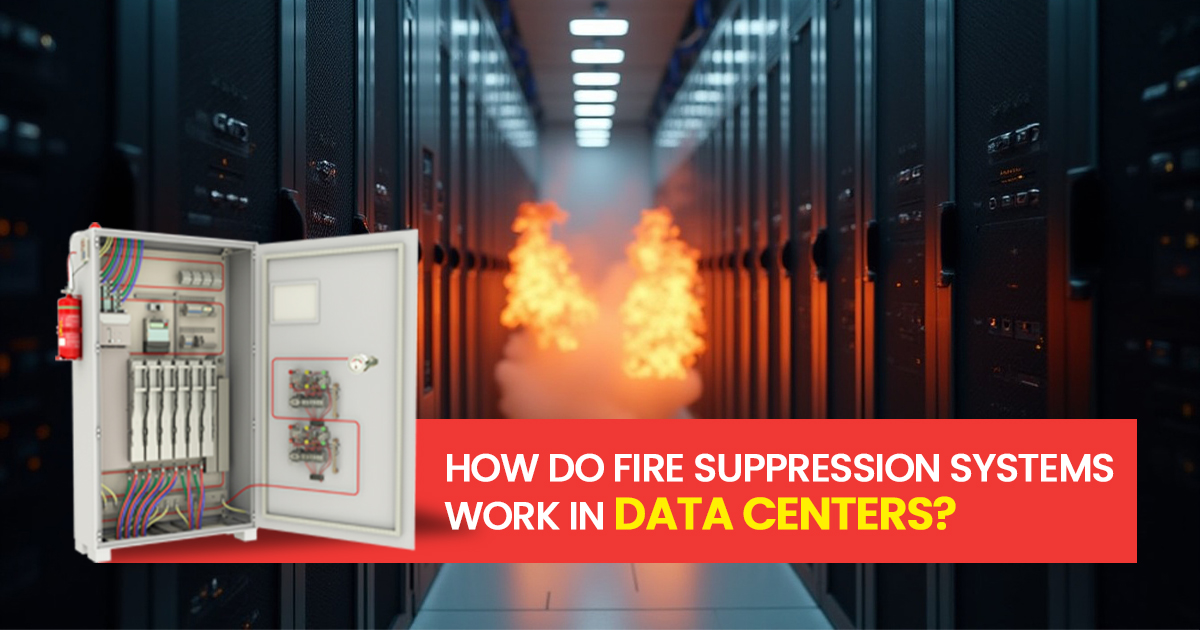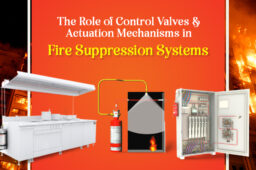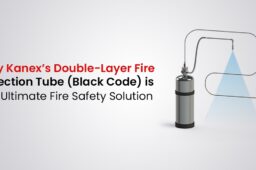How Fire Suppression Systems Work in Data Centers?
- July 22, 2025
There is a lot of information living inside a data center—emails, files, apps, websites, and pretty much everything businesses need to keep running every day. Now, if something as small as an overheated cable or a spark causes a fire in there, you can think how worse it can be.
Having said that, placing a perfect fire suppression system is the need of the hour. These systems are built to, for example, catch fires early at their stage and stop them. And that also, without damaging the sensitive stuff like servers or storage drives.
The Unique Fire Risks in Data Centers
Data centers come with their own set of fire hazards. Unlike regular office buildings, data centers have high-powered machines running around the clock. These machines can get pretty hot, especially if cooling systems fail. On top of that, electrical faults, overloaded circuits, or even something as simple as dust buildup can start a fire. And since water can seriously damage IT equipment, using water-based systems like sprinklers is usually not the best decision.
Fire Detection: The First Line of Defense
Before any system can stop a fire, it has to detect one. Most data centers use very sensitive smoke detectors that can pick up even the tiniest signs of trouble. In many cases, these detectors are placed in the air ducts or near the raised floors where the cables run. Early detection gives staff enough time to act. And if needed, the fire suppression system activates almost instantly.
Types of Fire Suppression Systems Used
Not all fires are the same, and different places use different methods to stop them. In data centers, where protecting the equipment is just as important as putting out the fire, gas-based systems are the most common. And the Novec 1230 fire suppression system is one of the safest and most effective options out there. This system, for example, is smart enough to stop the fire without damaging the hardware in the data centers. It doesn’t leave any residue and is safe for people, too. And that’s a big plus in areas where employees may still be working.
How the Suppression Process Works
Once a fire is detected, the system doesn’t wait around. This gas works by absorbing the heat from the fire and breaking the chemical reaction. In simple terms, it stops the fire before it spreads. And the best part is that it does all this without leaving behind water or foam. That means your servers, drives, and backup devices stay safe and dry.
Post-Suppression Protocols & Maintenance
Putting out the fire is just one step. After that, the system usually sends alerts to the building’s central system or fire department. Some setups even shut down power to prevent any other electrical problems.
And you know that regular maintenance is key. Fire suppression systems should be checked every few months to make sure they’re ready to go at any time. At Kanex Fire Solutions Limited, we help businesses keep their systems tested and ready with minimal hassle.
Conclusion
Fires can happen anywhere, even in places built to be secure, like data centers. That’s why having the right fire suppression system really matters. An innovative and fast-acting solution like Novec 1230 helps stop fires without harming equipment or people.
Frequently Asked Questions About Fire Suppression Systems
Which Gas Is Used in a Fire Suppression System?
Fire suppression systems use clean agent gases like Novec 1230, HFC-227ea, and FE-36, ideal for data centers and sensitive environments.
Which Type of Fire-Suppression System Is Typically the Safest for Humans?
DLP (Direct Low Pressure) fire suppression system is considered safe for humans, as it uses clean agents like Novec 1230, HFC, and FE-36, which are non-hazardous, eco-friendly, and electrically non-conductive. It also works automatically in the absence of humans.
How to Test a Fire Suppression System?
You need to test a fire suppression system visually and functionally, including checking notifications, alarms, and the system’s ability to suppress fires.
Which Fire Suppression System Is Best for Data Centers?
The best option for data centers is a clean agent fire suppression system using inert gases (like nitrogen, argon, or a combination of these) or clean agents like FM-200 or Novec 1230.
What Is the Difference Between Fire Suppression and Fire Sprinkler Systems?
Fire suppression and fire sprinklers are both designed to mitigate fire damage, but they’re different. A sprinkler system uses water to extinguish a fire, while a suppression system uses gas, foam, or chemicals.
Where Are Fire Suppression Systems Commonly Used?
Fire suppression systems are commonly used in areas where traditional sprinkler systems may not be effective or even detrimental.









